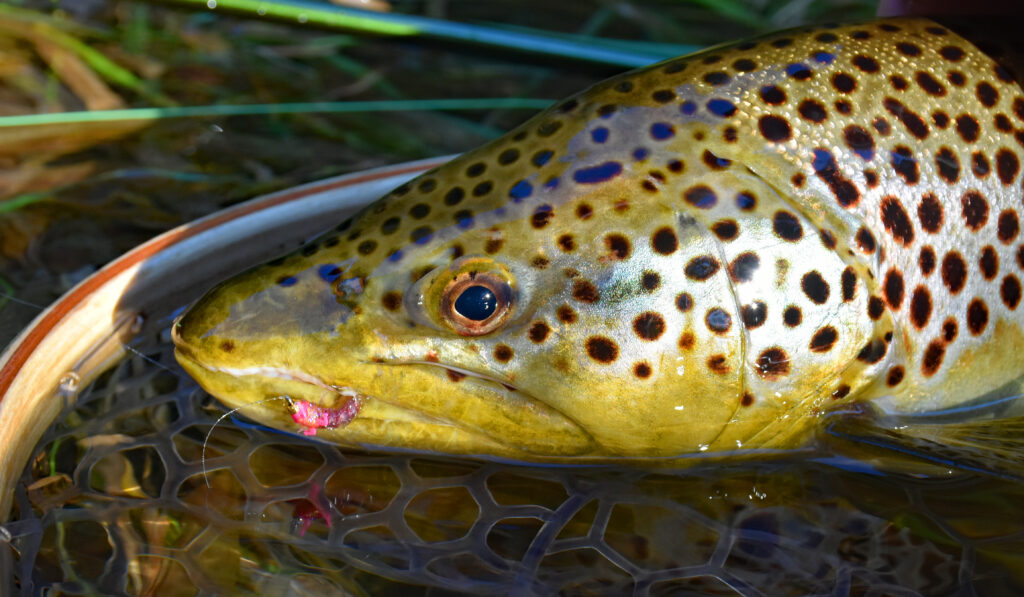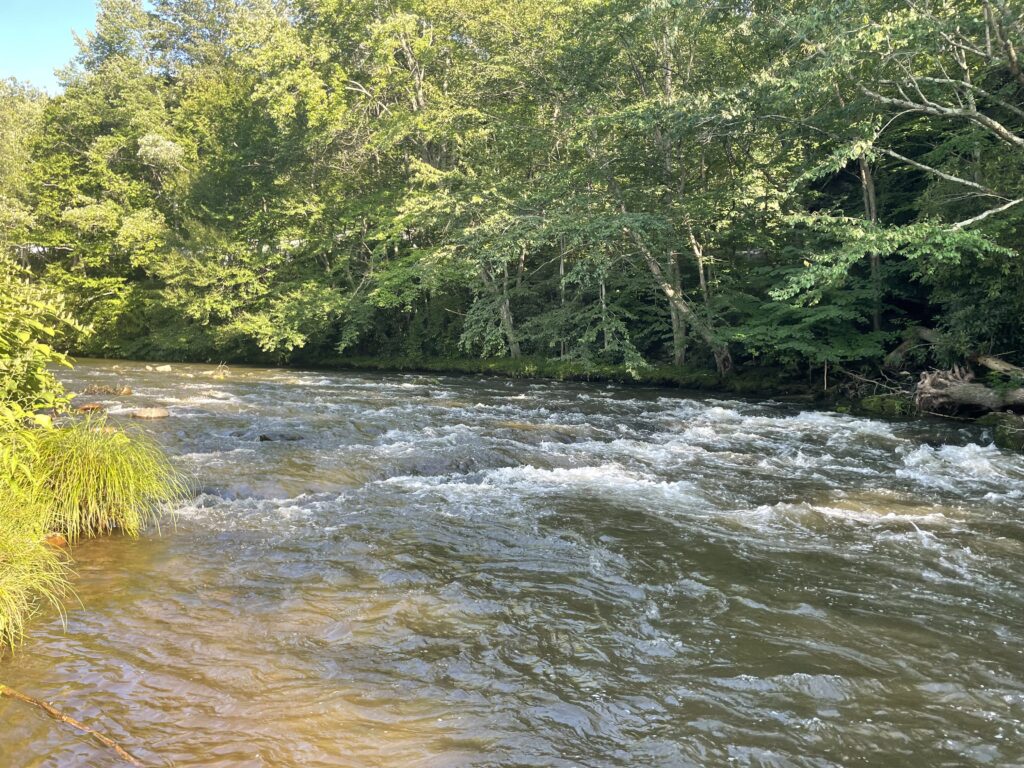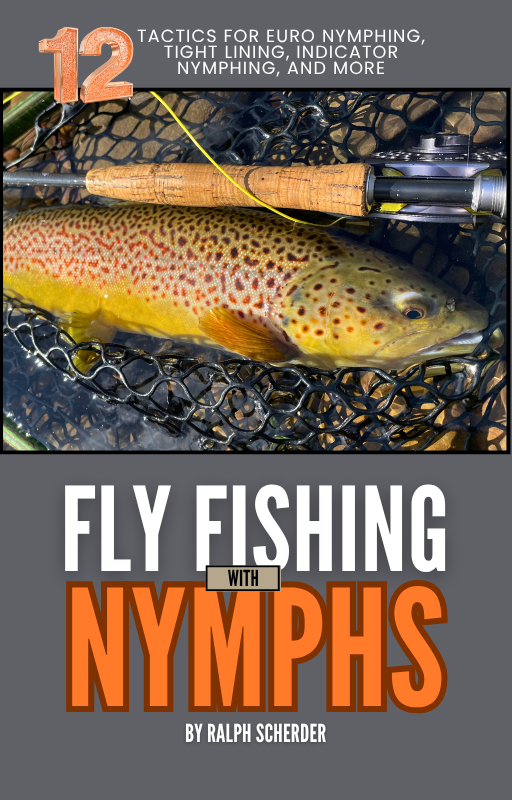Fly Fishing with Nymphs: Do Something Different

Every day on the water is different, and the only constant is change. Naturally, that means you have to change, too. The methods used last week, or even this morning, may not be working now.
What’s that saying about insanity being doing something over and over and expecting a different result? Well, if you’re feeling frustrated because you’ve been pounding a pool or run for the past two hours, casting in the same spots with the same flies, and you’re still not catching fish, you might soon be on your way to the loony bin! Bottom line, if it’s not working, do something different.
Small Changes
Doing something different doesn’t necessarily mean making huge, sweeping changes. Start small. A fly change. Adding or subtracting a split shot. Change your position so that you’re casting to the fish from a different angle.
And the biggest and easiest one of all – for godsakes, stop casting in the same spot every single time! If you’ve drifted your flies through the same seam 20 times, what makes you think the 21st time will produce a trout?
But every day I see anglers do these things, all day long, on every stream, and then they wonder why someone caught three or four times more than they did. Well, it typically has little to do with actual technique, and more to do with changing things up and showing the fish something they haven’t seen yet.
The main takeaway here is that even the small changes can make a huge difference. Think about it. How many times have you been using a fly without success, and then tie on a new pattern and catch a trout right away? It happens quite often, doesn’t it? The action may even be fast and furious on that new pattern at first, and then it slows down, not because there are no more trout to be caught, but because they’ve now all seen the fly. Changing patterns again can bring on a new flurry of activity.

Change Positions and Angles
The same can be said about changing your position. Standing in the same spot and presenting the fly at the same angle often produces diminishing returns. After a while, it stops being effective completely.
I tend to be proactive and cover a lot more water than most people, not in terms of distance, but by thoroughly working over every part of a stretch. If I make more than a handful of drifts through one particular seam without a bump, my next casts will be in a different seam. In essence, I’m hunting for that hungry trout that wants my fly. The more fish that see my fly, the more chances I’ll have of catching larger numbers. It’s all about the math. More opportunity equals more chances to succeed.
Also, think of it this way. In every riffle, run, or pool there are usually one or two eager biters that aren’t as selective or as picky about presentation. They’ll pounce on a fly as soon as it hits the water. They’ll eat a nymph even if it’s being dragged across multiple seams. The more riffles, runs, and pools you fish in a day, the more likely you’ll encounter more of these eager fish that seem to bite no matter what nymph you’re using or how it’s presented.
But changing positions doesn’t necessarily have to be about hunting for “dumb ones.” Every trout wants their food presented in a certain way, which is typically influenced by how the naturals are delivered in the currents where they’re feeding. Some of these feeding lies just can’t be fished properly from a single position or angle.
I’m thinking right now of a stream I fished in May 2024. I came to a nice little pocket behind a couple mid-stream rocks and fished it with an upstream presentation. That pocket produced three trout, all stocked rainbows. As I continued working the water, I got above the rocks and caught two more rainbows just upstream of the structure. After a few minutes, I let the nymphs go longer in the drift and swing down into the pocket behind the rocks. In a span of 8 drifts, I caught 8 more trout from behind the rocks, including two pretty nice wild browns. Presenting the flies from a different angle made all the difference!
Look for Opportunity

When fishing with friends, or even after working over a section of stream that has already been fished before I got there, I do differently by watching how they fish. I pay close attention to where they’re casting – but more accurately, I make mental notes of where they’re NOT casting.
After all, if we’re using similar techniques, and my friend has just drifted a nymph through a seam a half dozen times without a take, what makes me expect different results? Or, more likely, he has picked out a trout or two from the obvious holding water, so there’s no need for me to fish that water, too.
In this case, I do something different by targeting the seams they overlook. Amazingly, the majority of the time, at the end of a beat, we always seem to end up with the same number of fish. If I’d have fished the same spots they did, I no doubt would have caught less.
This happened recently while fishing with my friend Justing on the Little Juniata River. As Justin worked through a deep, narrow run, I noted every spot he hit along the way. In this particular case, I noticed he had missed a deeper drop-off on the other side of the run, which created a narrow seam right up next to the far bank. Within 20 minutes or so of working through the run, Justin landed three 7-10-inch wild browns. I also landed three 10-14-inch wild browns fishing behind him.
Let the Trout Tell You What They Want
It’s easy to form bad habits and repeat the same processes over and over despite lack of success. Often, we attribute this failure to lack of skill, or perhaps believing we just didn’t have the right fly, or think we need a better rod. That’s usually not the case, though. Most of the time, lack of success comes from an inability or unwillingness to try something new or make the small adjustments to determine what the trout want that particular day.
The world of trout is dynamic. Conditions are always changing. There’s no guarantee that what worked yesterday will work today – in fact, it’s very unlikely! So you have to be willing to experiment, not with huge, sweeping changes, but by making small adjustments to our presentation and approach. If what you’re doing isn’t working, make a change and do something different, and keep making changes until you figure it out.
Have a fly fishing question you’d like answered? Drop us a line at info@darkskskiesflyfishing.com! If we use your question in a blog post or in the newsletter, we’ll send you a FREE fly box with a dozen of our favorite nymphs and dry flies!

